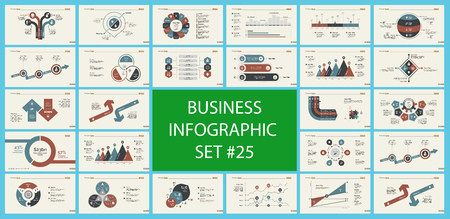Understanding Content Marketing ROI for Lead Generation
What Does Content Marketing ROI Really Mean?
ROI, or Return on Investment, is a common term in the business world. When it comes to content marketing, ROI is all about figuring out if your content efforts are actually driving valuable results. In simple terms, it’s comparing what you spend on creating and promoting your content to the value you get back—usually in the form of leads, sales, or other business goals. For US-based businesses, understanding content marketing ROI isn’t just about website traffic or social media likes; it’s about turning those online actions into real leads that can grow your customer base.
Why Does Content Marketing ROI Matter for US Businesses?
The US market is crowded and competitive. Every dollar you put into marketing needs to work hard for you. Knowing your ROI helps you answer key questions:
- Is my content bringing in high-quality leads?
- Are my marketing dollars being spent wisely?
- Which types of content are generating the most interest from my target audience?
If you don’t measure ROI, you could be wasting time and money on strategies that don’t deliver results. In the US, where customer expectations are high and competition is fierce, tracking ROI helps businesses stay ahead.
How Content Marketing ROI Ties to Lead Generation
Content marketing is more than just blogging or posting on social media. It’s about creating valuable information that attracts potential customers and encourages them to share their contact info or engage with your brand further. This process—known as lead generation—is essential for growing your business. The better your content, the more likely you are to generate quality leads who are interested in your products or services.
Key Ways Content Drives Lead Generation
| Content Type | Lead Generation Impact |
|---|---|
| Blog Posts | Educate prospects, build trust, encourage newsletter sign-ups |
| Ebooks & Guides | Offer value in exchange for email addresses |
| Webinars & Videos | Create direct engagement and collect attendee info |
| Case Studies & Testimonials | Show real-world results, build credibility with leads |
The Bottom Line on Content ROI for Lead Gen in the US
If you want to stand out and succeed in the American market, tracking and understanding your content marketing ROI is a must. It helps you see which strategies truly drive quality leads—so you can focus your efforts where they matter most.
2. Essential Metrics for Tracking ROI
Why Tracking the Right Metrics Matters
To truly understand how well your content marketing is working for lead generation in the US, you need to focus on the right numbers. The goal isn’t just to get more website visitors—it’s about turning those visitors into leads, and eventually, loyal customers. By tracking specific metrics, you can see what’s actually driving results and make smarter decisions for your business.
Key Metrics to Monitor
Here are some of the most important metrics US businesses use to measure the effectiveness of their lead-focused content marketing campaigns:
| Metric | What It Means | Why It Matters |
|---|---|---|
| Conversion Rate | The percentage of visitors who complete a desired action (like filling out a form or signing up for a newsletter) | Tells you how effective your content is at turning visitors into leads |
| Cost Per Lead (CPL) | The amount you spend on content marketing divided by the number of new leads generated | Helps you understand if your investment is paying off and compare performance across channels |
| Customer Lifetime Value (CLV) | The total revenue you expect from a customer over their entire relationship with your business | Shows the long-term impact of acquiring high-quality leads through content marketing |
| Lead Quality Score | A score based on factors like engagement level, company fit, or likelihood to buy | Makes sure you’re not just getting more leads, but getting better ones that are likely to convert |
| Traffic Sources | Where your leads are coming from—search engines, social media, referrals, etc. | Lets you identify which platforms or campaigns are driving the most valuable leads in the US market |
| Email Sign-Up Rate | The percentage of visitors who subscribe to your email list via content offers or pop-ups | A simple way to gauge ongoing interest and build a direct line to potential customers |
| Content Engagement Metrics | Measures like average time on page, pages per session, and social shares for lead-generating content pieces | Tells you which topics and formats resonate most with your US audience and keep them engaged longer |
| Bounce Rate on Landing Pages | The percentage of visitors who leave without taking action on your lead-gen landing pages | A high bounce rate could mean your offer or messaging isn’t connecting with US prospects as intended |
How to Use These Metrics Together
No single metric gives you the full picture. For example, a campaign might bring in lots of cheap leads (low CPL), but if those leads never become customers (low CLV), it’s not really a win. By tracking these metrics together, you’ll see both short-term wins and long-term growth opportunities. This approach helps US marketers fine-tune their strategies so that every dollar spent on content marketing works harder for lead generation.

3. Best Tools and Platforms for Measurement
When it comes to tracking, measuring, and improving content marketing ROI for lead generation in the US, using the right analytics tools is key. There are several US-centric platforms that make it easier to monitor your content’s performance across multiple channels. Here’s a quick review of some popular options:
Popular Analytics Tools for Content Marketing ROI
| Tool | Main Features | Best For |
|---|---|---|
| Google Analytics | Tracks website traffic, user behavior, conversion goals, and custom events. Integrates with Google Ads and Search Console. | Measuring web content performance and lead attribution. |
| HubSpot | All-in-one platform for inbound marketing, including blog analytics, landing page tracking, email performance, and built-in CRM. | B2B companies focusing on inbound lead generation. |
| SEMrush | Content audit, keyword tracking, competitor analysis, and SEO reporting. | Optimizing content for organic search and benchmarking against competitors. |
| Sprout Social | Social media analytics, engagement tracking, campaign performance across networks (Facebook, Twitter, LinkedIn). | Tracking social-driven leads and brand awareness. |
| Hotjar | User behavior insights like heatmaps, session recordings, and feedback polls. | Understanding how visitors interact with your landing pages and blog posts. |
| Tableau | Advanced data visualization and dashboard creation by integrating multiple data sources. | Larger teams needing custom ROI reports and executive dashboards. |
How These Tools Help Measure ROI Across Channels
1. Multi-Channel Attribution Tracking
Platforms like Google Analytics and HubSpot let you set up conversion paths so you can see which content or channel is bringing in the most qualified leads. This helps marketers understand the customer journey from the first touchpoint to conversion.
2. Real-Time Performance Monitoring
If you’re running campaigns on social media or email newsletters, tools such as Sprout Social or HubSpot provide real-time metrics on clicks, shares, and conversions. You’ll know immediately which posts or emails are resonating with your US-based audience.
3. Visualizing Success Metrics Easily
Tools like Tableau allow you to create easy-to-understand dashboards that put all your key metrics—traffic sources, engagement rates, conversion rates—into one view. This is especially useful when sharing results with stakeholders who may not be deep into analytics themselves.
Choosing the Right Tool for Your Business Needs
The best tool for measuring content marketing ROI depends on your business size, marketing channels used, and specific goals for lead generation in the US market. Many companies find success by integrating a few of these tools to get a full picture—from top-of-funnel awareness down to closed sales. Start by identifying your must-have features (like CRM integration or advanced reporting), then choose the platform(s) that best fit those needs.
4. Strategies to Optimize and Improve ROI
Focus on Audience-Centric Content
To boost your content marketing ROI for lead generation in the US, start by deeply understanding your target audience. Use surveys, social listening, and analytics tools to identify their pain points, preferences, and behaviors. Craft content that addresses their needs in a relatable way.
Leverage Data-Driven Insights
Use data to guide your content strategy. Analyze which pieces of content drive the most engagement and leads. Tools like Google Analytics, HubSpot, or SEMrush can help you spot trends in traffic sources, bounce rates, and conversion paths. Prioritize topics and formats that show strong performance.
Optimize Content for Conversion
Make it easy for readers to become leads by including clear calls-to-action (CTAs) and lead capture forms throughout your content. Experiment with different CTA placements and formats—like inline buttons, pop-ups, or slide-ins—to see what works best for your US-based audience.
Example: CTA Placement Testing Table
| CTA Placement | Conversion Rate (%) |
|---|---|
| End of Blog Post | 1.8 |
| Sidebar | 1.2 |
| Pop-up | 3.0 |
| Inline (within text) | 2.5 |
A/B Test Content Elements
A/B testing is essential for finding out what resonates with American audiences. Try different headlines, images, CTAs, and even article lengths. Measure how each variation impacts engagement and lead generation, then double down on what works.
Repurpose High-Performing Content
If a blog post or video performs well, turn it into other formats—like infographics, podcasts, or social media snippets—to reach new segments of your US market without reinventing the wheel.
Nurture Leads with Personalization
Once you’ve generated leads, use personalized email sequences or retargeting ads based on their behavior and interests. This keeps your brand top-of-mind and moves prospects through the sales funnel more efficiently.
Email Nurturing Sequence Example
| Email Stage | Content Type | Main Goal |
|---|---|---|
| Welcome Email | Brand Introduction & Resources | Build Trust |
| Follow-Up 1 | Case Study or Testimonial | Add Social Proof |
| Follow-Up 2 | Tutorial or How-To Guide | Educate Lead |
| Final Nudge | Special Offer/Free Consultation | Encourage Conversion |
Stay Agile and Iterate Often
The US digital landscape changes fast. Regularly review performance metrics and be ready to adjust your approach. Continuous improvement is key to maximizing your content marketing ROI for lead generation.
5. Case Studies and Real-World Success Stories
How US Businesses Boosted Lead Generation with Content Marketing
Understanding the impact of content marketing on lead generation becomes clearer when we look at actual examples from US companies. Here are a few real-world success stories that show how tracking, measuring, and improving content marketing ROI can deliver impressive results.
Case Study 1: SaaS Company Grows Leads by 70%
A mid-sized US-based SaaS company wanted to increase qualified leads through its blog. By using Google Analytics and HubSpot, they tracked which topics brought the most visitors and engagement. They then focused on creating more in-depth guides and industry reports based on those popular topics.
| Before Optimization | After Optimization |
|---|---|
| Monthly Leads: 200 | Monthly Leads: 340 |
| Bounce Rate: 65% | Bounce Rate: 45% |
| Content ROI: 180% | Content ROI: 310% |
This targeted approach helped them boost their monthly lead generation by 70% within six months.
Case Study 2: Local Real Estate Agency Doubles Lead Conversion Rates
A real estate agency in Texas implemented detailed tracking for their email newsletters and neighborhood guides. By measuring which emails had higher open rates and which guides were downloaded the most, they refined their content strategy. They also started using personalized follow-up emails triggered by downloads.
| Metric | Before | After |
|---|---|---|
| Email Open Rate | 22% | 37% |
| Guide Downloads/Month | 40 | 85 |
| Lead Conversion Rate | 6% | 12% |
The result was a doubling of their lead conversion rate and higher engagement across their digital channels.
Case Study 3: E-Commerce Brand Tracks Social Content Performance
An online apparel retailer in California started tracking social media posts using UTM codes and integrated analytics tools. They measured which types of posts—like user-generated content versus professional product shoots—drove more traffic and sales leads to their site. The data showed that user-generated posts performed best for attracting new subscribers.
| Content Type | Traffic Increase | New Leads/Month |
|---|---|---|
| User-Generated Posts | +45% | 310 |
| Professional Product Shoots | +18% | 120 |
This insight allowed them to focus more on community-driven content, resulting in a significant uptick in both site visits and new customer leads.
Key Takeaways from These US Market Examples:
- Tracking specific metrics (like downloads or open rates) helps identify what works.
- Tweaking content strategy based on real data can double or even triple lead generation ROI.
- The right tools, such as Google Analytics, HubSpot, or custom dashboards, make it easier to measure and improve results over time.
If you want to see similar improvements, start by tracking your current efforts, measure what matters most to your business, and refine your content strategy based on clear data insights.

